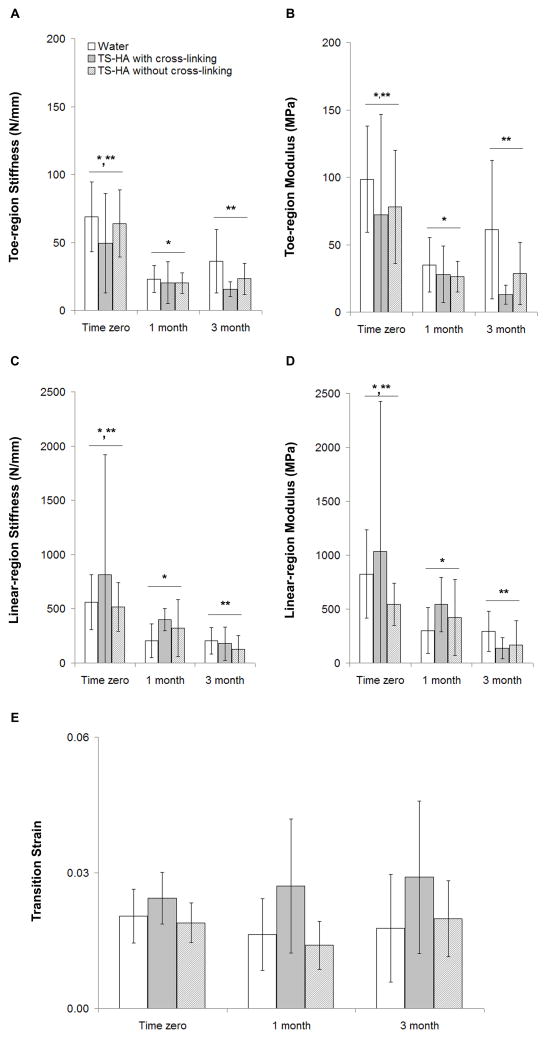Figure 5.
Elastic mechanical properties of water control, TS-HA with cross-linking, and TS-HA without cross-linking treated fascia (n=7–8 per group per time point). (A) *,** Toe-region stiffness was significantly greater at time zero than at one and three months (p<0.001). Treated fascia with cross-linking trended toward a lower toe-region stiffness than water treated controls (p=0.06), which is not denoted with symbols because of the manner in which the data are graphically presented here. (B) For toe-region elastic modulus, group (p<0.001) and time (p=0.05) had significant effects. *,** Toe-region modulus was significantly greater at time zero than at one and three months. TS-HA treated fascia with cross-linking exhibited a significantly lower toe-region elastic modulus than water treated controls, which is not denoted with symbols because of the manner in which the data are graphically presented here. (C) *,** Linear-region stiffness was significantly higher at time zero than at one and three months (p=0.001). (D) *,** Linear-region modulus was significantly higher at time zero than at one and three months (p=0.001). (E) TS-HA treated fascia with cross-linking had a significantly greater transition strain than treated fascia without cross-linking and water treated controls (p=0.003). Neither result is denoted with symbols because of the manner in which the data is graphically presented here.

